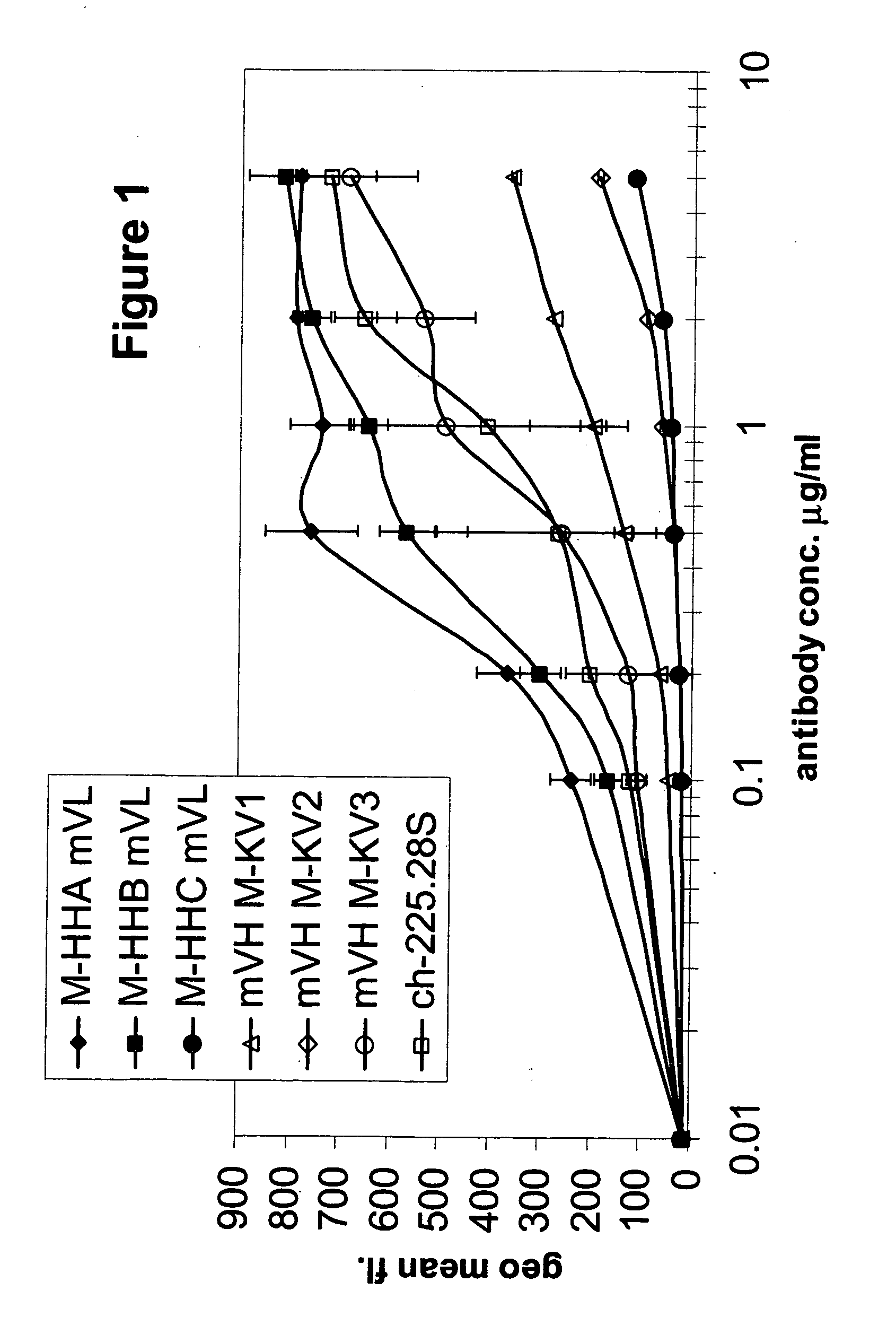Antigen binding molecules directed to MCSP and having increased Fc receptor binding affinity and effector function
a technology of mcsp and binding molecules, applied in the field of antigen binding molecules, can solve the problems of ineffective anti-idiotypic antibodies targeting mcsp expressing cells, immunotherapies have drawbacks, and advanced stage melanoma is frequently resistant to conventional treatment regimens, and achieve the effect of enhancing the binding affinity and effector function of fc receptors and enhancing the efficacy of abms
- Summary
- Abstract
- Description
- Claims
- Application Information
AI Technical Summary
Benefits of technology
Problems solved by technology
Method used
Image
Examples
example 1
Generation of Humanized Anti-MCSP MAbs
A. High Homology Acceptor Approach
[0255] Under this approach, a high homology antibody acceptor framework search was performed by aligning the parental protein sequence, derived from the mouse derived scFv antibody 225.28S to a collection of human germ-line sequences and picking that human sequence that showed the highest sequence identity while at the same time conserving all canonical residues on a functional level. Here, the sequences IGHV3-15 (Acc. No. X92216) and IGHV3-7 (Acc. No. M99649) from the IMGT database were taken as the framework acceptor sequences. Both are members of the VH3 family. The IGKV1-9 sequence (Acc. No. Z00013) from the VK1 family of the same database was chosen to be the framework acceptor for the light chain. On these three acceptor frameworks the three complementary determining regions (CDRs) of each of the murine 225.28S heavy and light variable domains were grafted. Since the framework 4 region (FR4) is not part...
example 2
Materials and Methods
A. Oligosaccharide Analysis
[0266] 1. Oligosaccharide Release Method for Antibodies in Solution
[0267] Between 40 and 50 μg of antibody were mixed with 2.5 mU of PNGaseF (Glyko, U.S.A.) in 2 mM Tris, pH7.0 in a final volume of 25 microliters, and the mix was incubated for 3 hours at 37° C.
[0268] 2. Sample Preparation for MALDF / TOF-MS
[0269] The enzymatic digests containing the released oligosaccharides were incubated for a further 3 h at room temperature after the addition of acetic acid to a final concentration of 150 mM, and were subsequently passed through 0.6 ml of cation exchange resin (AG50W-X8 resin, hydrogen form, 100-200 mesh, BioRad, Switzerland) packed into a micro-bio-spin chromatography column (BioRad, Switzerland) to remove cations and proteins. One microliter of the resulting sample was applied to a stainless steel target plate, and mixed on the plate with 1 μl of sDHB matrix. sDHB matrix was prepared by dissolving 2 mg of 2,5-dihydroxybenzoic ...
PUM
| Property | Measurement | Unit |
|---|---|---|
| pH | aaaaa | aaaaa |
| volume | aaaaa | aaaaa |
| volume | aaaaa | aaaaa |
Abstract
Description
Claims
Application Information
 Login to View More
Login to View More - R&D
- Intellectual Property
- Life Sciences
- Materials
- Tech Scout
- Unparalleled Data Quality
- Higher Quality Content
- 60% Fewer Hallucinations
Browse by: Latest US Patents, China's latest patents, Technical Efficacy Thesaurus, Application Domain, Technology Topic, Popular Technical Reports.
© 2025 PatSnap. All rights reserved.Legal|Privacy policy|Modern Slavery Act Transparency Statement|Sitemap|About US| Contact US: help@patsnap.com



